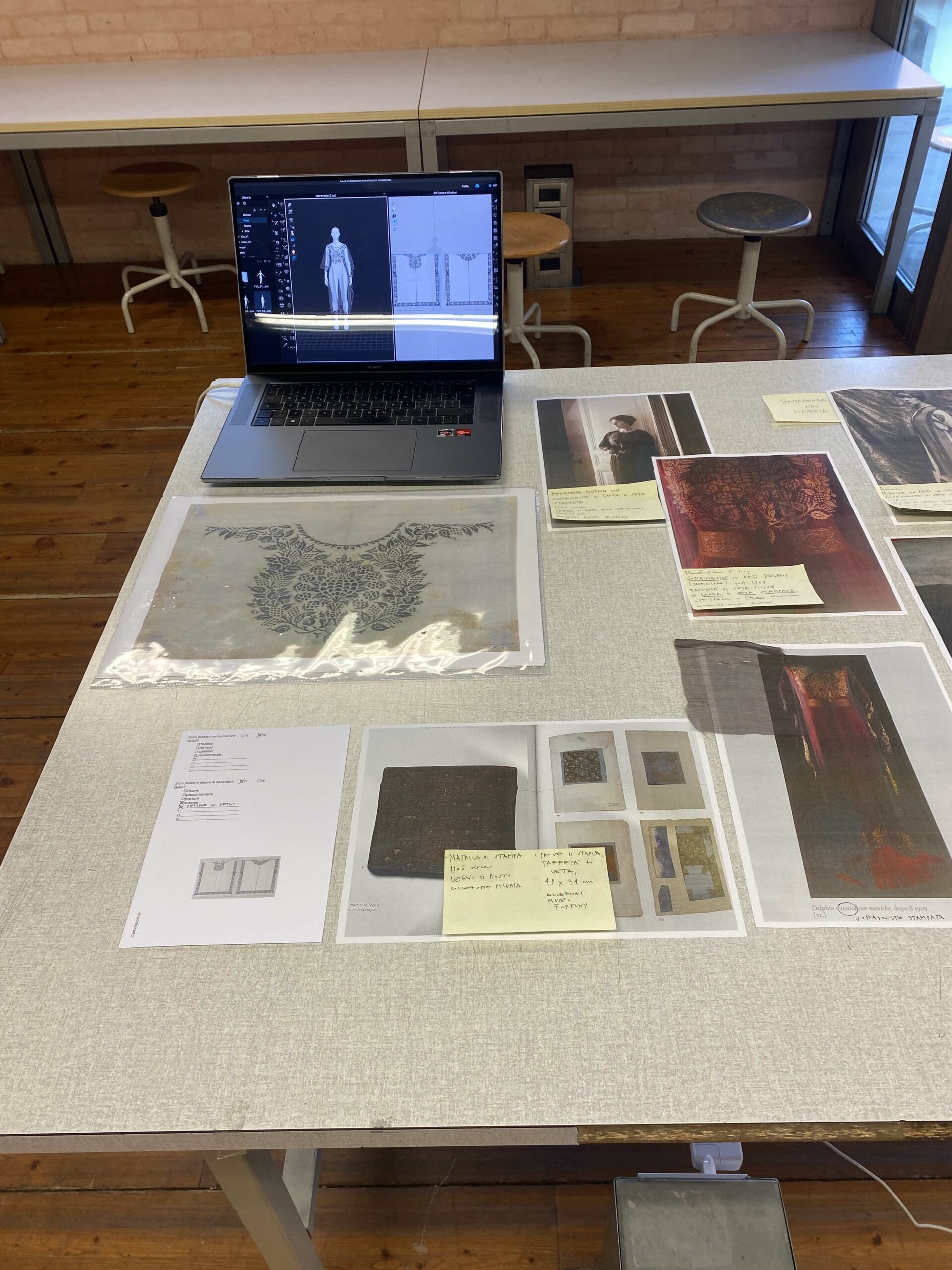
EFHA World 20.10.2025
02.01.2023
craftembroideryeuropean costumeEuropean fashiontextile historytextile museum
crafting our way to discover the area’s traditions and passion
The term ‘craft’ has the power to evoke a far-reaching, diverse universe: a universe made of traditions, family stories, techniques handed down from generation to generation, intimate memories, beautiful objects and symbols of identity. Around the world, each territory has its own history, and specific crafts are an integral part of the history of different areas.
The history of Prato and of the district that developed around the city is woven into its textiles. The Florentine city started producing textiles in the 12th century and, after a period of political and economic decline during the 16th and 17th centuries, the production resumed in the late 18th century. Since then Prato has embarked on its route to modernity, merging centuries-old craft skills with industrial development and growth.
As part of the CRAFTED project, we collaborated with Museo del tessuto di Prato and, thanks to the help of the Università degli Studi di Firenze, produced four videos to recover the stories related to the district’s traditional crafts and the people preserving them, amplifying their voice and presenting them to a wider audience.
The four episodes are part of the #craftingheritage vlog series and illustrate the rich heritage, creativity, commitment and passion for the craftsmanship of Prato and its people – testimonies to listen to, learn from, and treasure forever.
The first video introduces Ivo Vignali, head of the Rifinizone Vignali, who recalls how contemporary practice is always inspired by the crafting techniques and methodologies developed over time, allowing manufacturers to craft objects of timeless charm. For Prato, velvet is a sort of royal banner. Since the Renaissance, its velvets have been the most admired textiles – a true element of pride for the region. The historical value of velvets for the district is evoked by Daniela degli Innocenti, conservator and curator of the Museo del Tessuto, whose extensive collection of velvets are able to unveil secrets and tales of European aristocracy.
The second stop was at Franca Verteramo’s atelier. Trained as an amateur embroiderer by her mother and aunts since she was very young, Franca grew to become a professional embroiderer praised by fashion designers as Roberto Cavalli and Peter Dundas and artists as Mary J. Blidge and Shakira, for whom she embroidered the iconic outfits she wore for the Super Bowl.
In the third episode Luigi Ricceri, from Lanificio Luigi Ricceri, talks about tradition and innovation in his textile factory, where study and knowledge combine with the poetics and possibilities offered by nature. How can machines help create a future for craft? Mr Ricceri answers by showing how to produce objects able to bridge past and present, demonstrating how craft can evolve: thanks to the hands and minds of those who know it and care for its future. Preserving artefacts that show how modernity has always been crafted through textiles made with machines is also one of the missions of the Museo del Tessuto di Prato, as explained by Laura Fiesoli, responsible for the contemporary collection of the museum.
In the last episode, Emanuele Lucchesi, of the Marco Lucchesi Srl “Vivere In Tessuto” factory, reflects on creativity and making. Making is thinking, and craft results from the collaboration of hands and minds. Both Lucchesi and Margherita Tufarelli, researcher in the Department of Architecture of the Università degli studi di Firenze, state clearly how the savoir-faire of the textile district can only survive if younger generations understand its value and vital role in the local community and society at large.
The videos were produced by EFHA as part of the Crafted project, a Generic Service project aimed at enriching and promoting traditional and contemporary crafts. Read more about this project on Europeana Pro, and find all editorial from Crafted on the Making Culture feature page